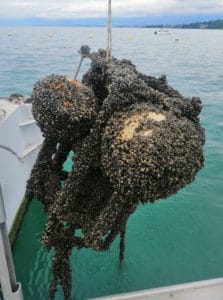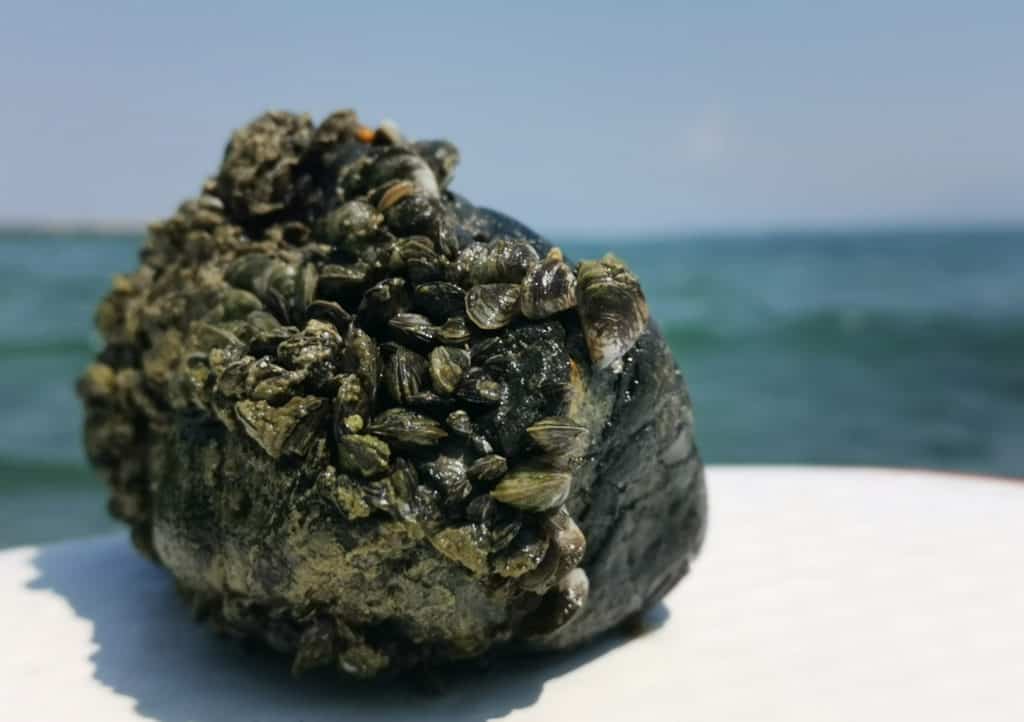The quagga mussel continues to proliferate in Lake Geneva: how can over-introduction be avoided, and what impact will it have?
Quagga mussels have been expanding rapidly in Lake Geneva since 2015. Its development should stabilize within the next 4 to 5 years. CIPEL would like to remind you of the best practices to adopt to avoid over-introduction and spread to other aquatic environments that have so far been preserved, in order to limit the impact on ecosystem functioning and the services provided by the lake (drinking water production, fishing, thermal exploitation, leisure activities).
The quagga mussel is an invasive exotic species native to the Black Sea region. It arrived accidentally in Lake Geneva, due to the transfer of boats from one environment to another, and became established. It quickly replaced the zebra mussel, another undesirable species present in Lake Geneva since the 1960s. A scientific follow-up program has been set up by CIPEL to monitor the effects of the quagga mussel on the functioning of the lake.
How can we avoid overintroduction of the quagga mussel in Lake Geneva?
Quagga mussels attach themselves to boats, but also to water sports and fishing equipment. CIPEL therefore recommends effective cleaning of boats and equipment moving from one lake to another, before any launch in Lake Geneva.
The essential steps to take are as follows:
- Clean the boats' hulls, empty any ballast water that may contain larvae, and run the engine ashore for a few seconds before transferring (Note: it is important to perform these operations before the transfer begins).
- Clean all equipment that may have been submerged (life jackets, diving equipment, ropes, anchors, fenders, etc.).
Prevent the arrival of other invasive alien species
To prevent the spread of new unwanted species, CIPEL also reminds aquarists never to discharge animals, plants or aquarium wastewater into the environment.
For further information
What impact will the quagga mussel have on Lake Geneva and the services it provides?
As adults, quagga mussels find their food by filtering up to 2 liters of water per day. The huge volumes of water filtered in this way alter the distribution of resources available to other living organisms, thereby upsetting the food chain.
The quagga mussel clings to many types of natural substrate, but it also colonizes the metal pipes used to pump lake water for drinking water production and air conditioning with naturally cold water, as well as fishing tackle, causing significant damage and costs.
In this context, CIPEL is paying close attention to the effectiveness and side-effects of techniques to control quagga mussel proliferation, particularly chemical-based control.
Towards more effective control in cooperation with other managers of large Alpine lakes
In view of the scale of the problem, which affects all aquatic environments, CIPEL is in contact with other managers of large Alpine lakes to share knowledge and solutions, and act more effectively.
Find out more:
- Lac du Bourget (France)
- Canton of Vaud
- Lake Annecy (communication to come)

Photograph of a scientific measuring instrument fully colonized by quagga mussels after a year's immersion in the lake at a depth of 8 meters. Until now, these "shock" images have always come from North America, as biofouling in Europe has always been far less spectacular.
Credit: LéXPLORE, Sébastien Lavanchy









